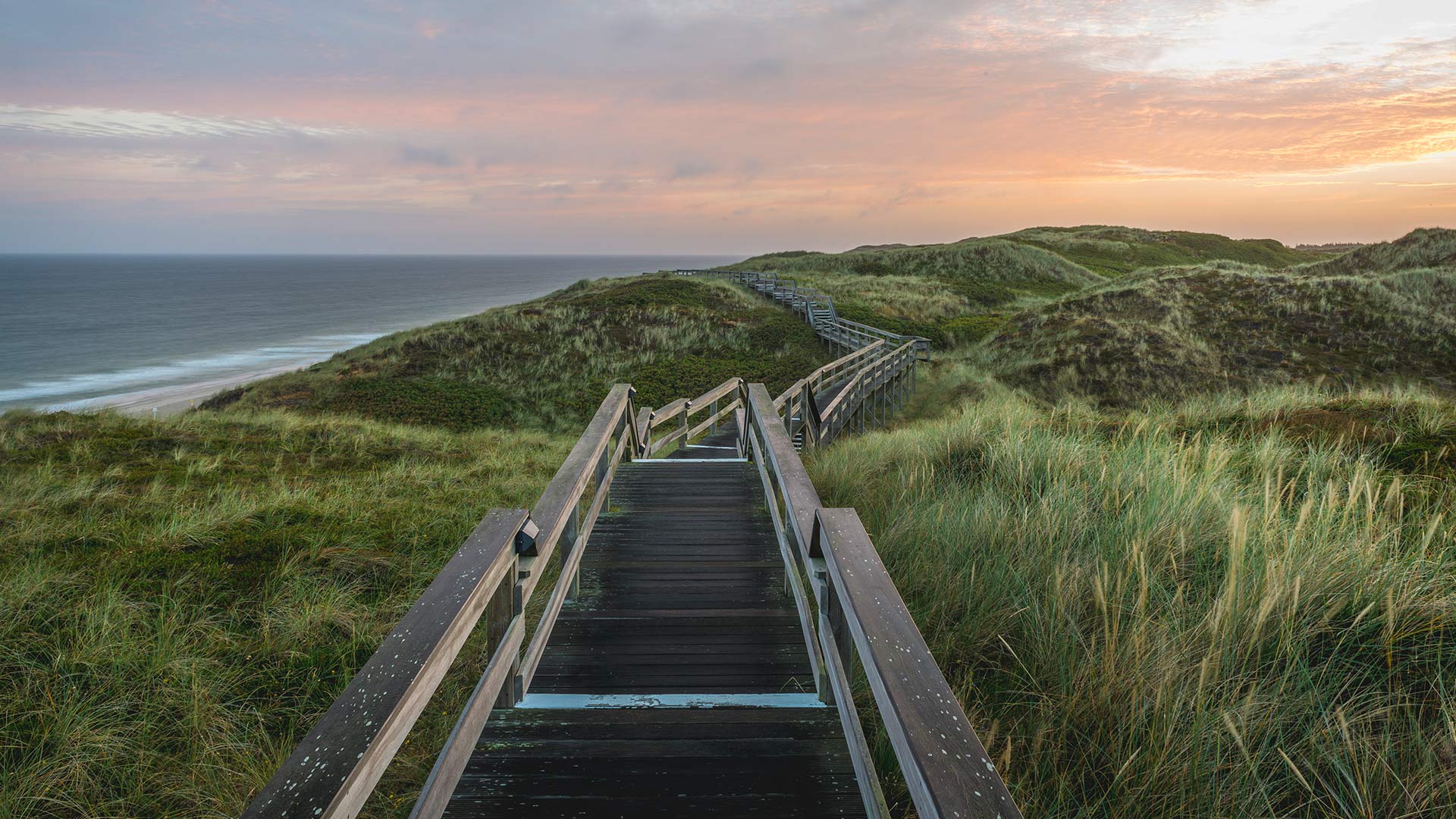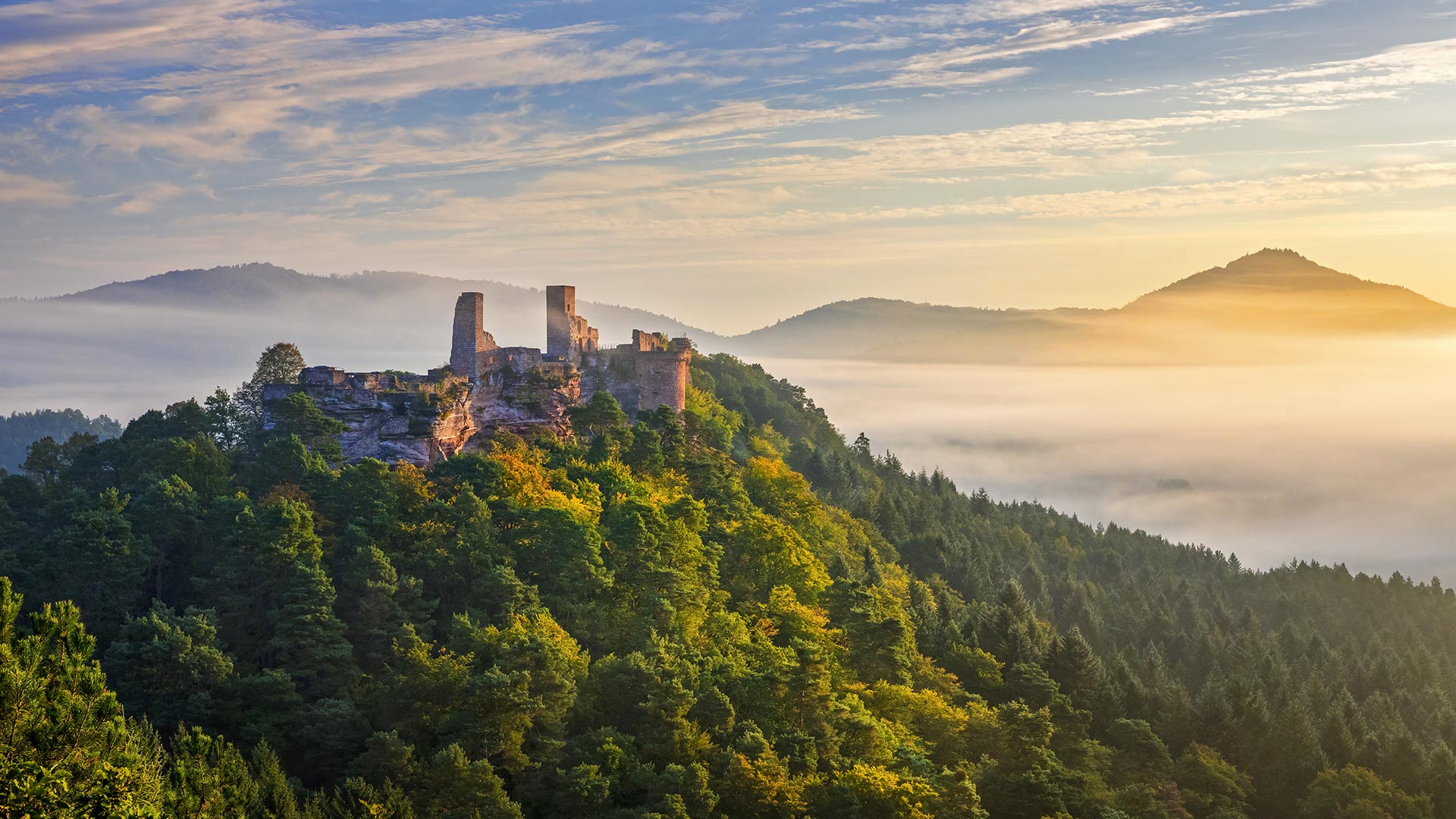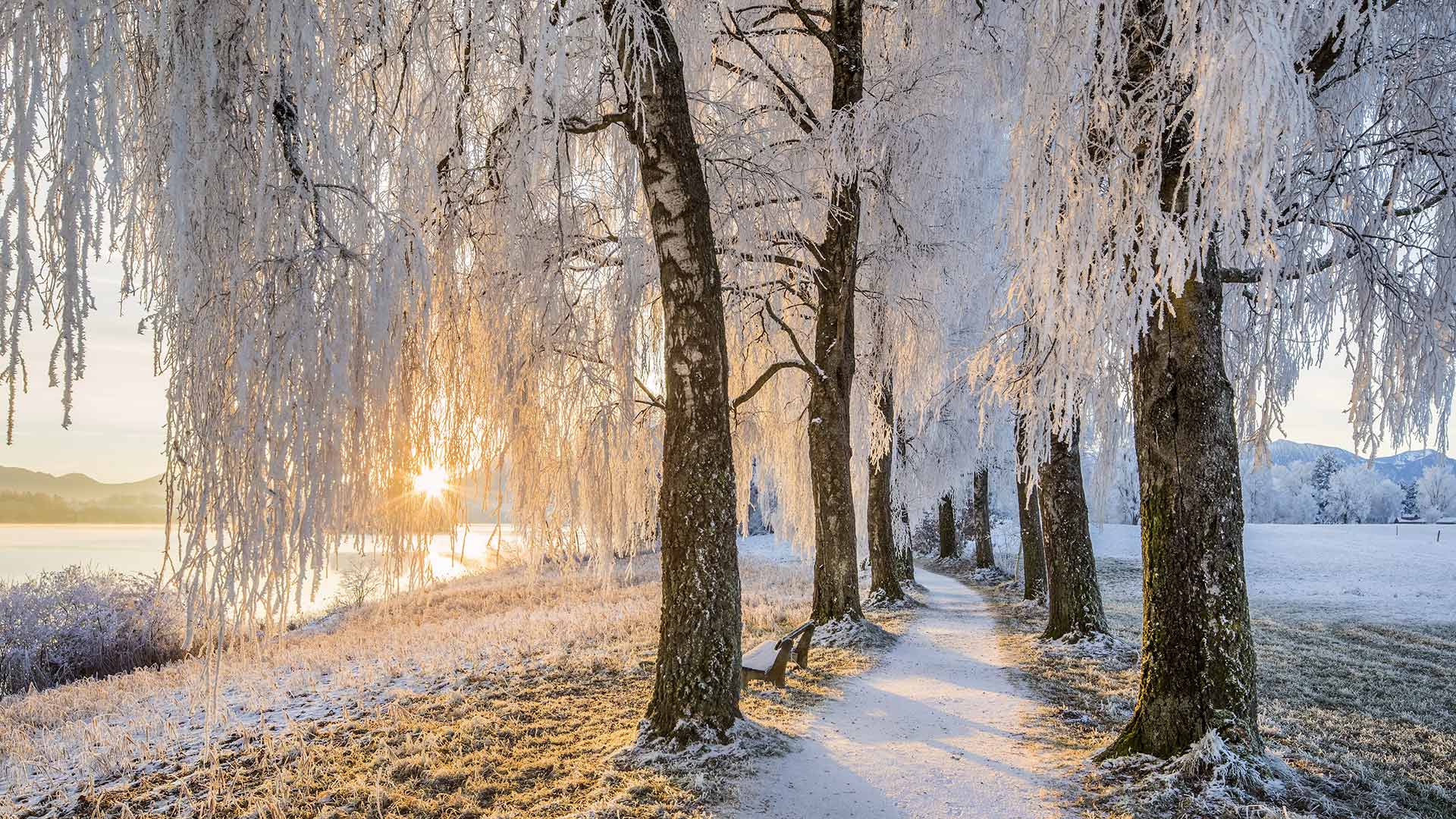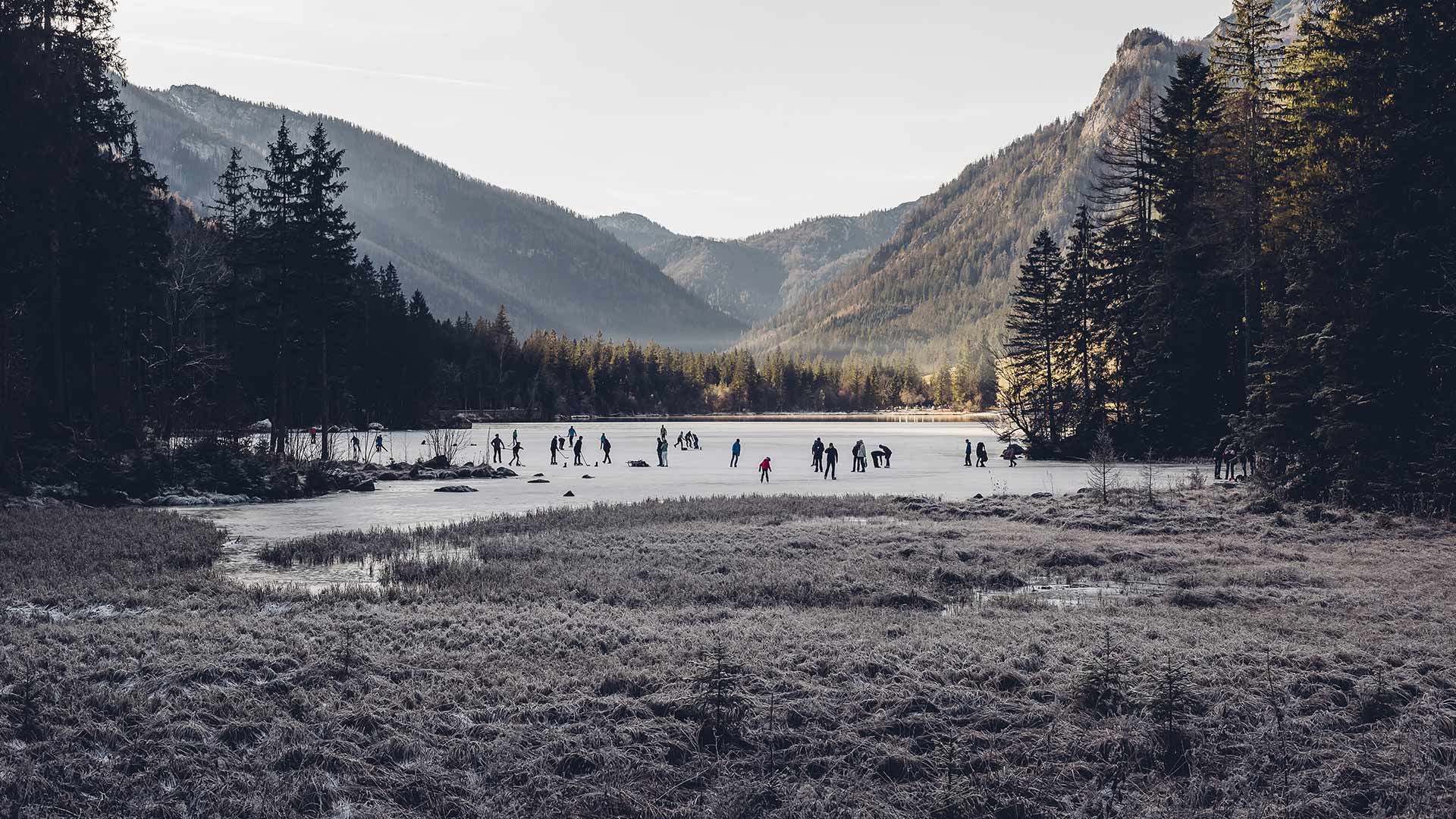通往海滩的木板路,德国叙尔特岛 (© Kerstin Bittner/Westend61/Offset by Shutterstock)
郁金香田鸟瞰图,德国萨克森-安哈尔特 Aerial view of tulip fields, Saxony-Anhalt, Germany (© Anke Scheibe/Westend61/offset by shutterstock)
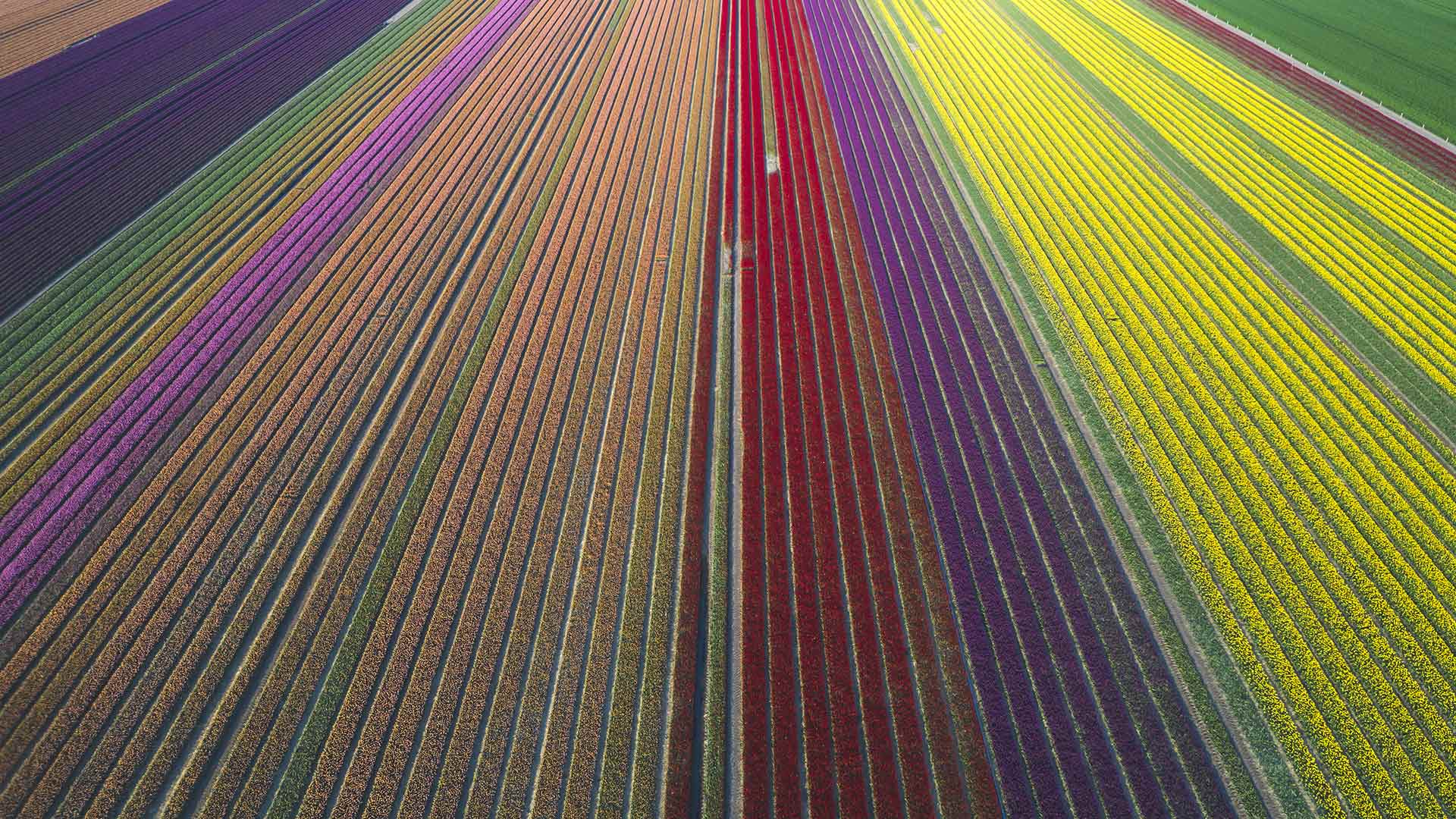
郁金香田鸟瞰图,德国萨克森-安哈尔特 Aerial view of tulip fields, Saxony-Anhalt, Germany (© Anke Scheibe/Westend61/offset by shutterstock)
Colorful flowers
Are these tulips from Amsterdam? The Netherlands is the world's largest tulip producer with a share of over 80 percent, but our picture today shows a tulip field in Saxony-Anhalt. In this country too, the popular flowers are grown in large fields in neat rows and bright colors.
达恩附近普法尔茨森林中的Altdahn城堡,德国莱茵兰-普法尔茨(Dahn Rockland), Palatinate Forest, Rhineland-Palatinate, Germany (© Reinhard Schmid/Huber/eStock Photo)
施塔弗尔湖畔乌芬附近的桦树大道,德国巴伐利亚 (© Reinhard Schmid/eStock Photo)
从上魏斯巴赫山地列车的车站向外看,德国图林根 View from railroad station of mountain train in Oberweissbacher, Thuringia, Germany (© golero/iStock/Getty Images Plus)
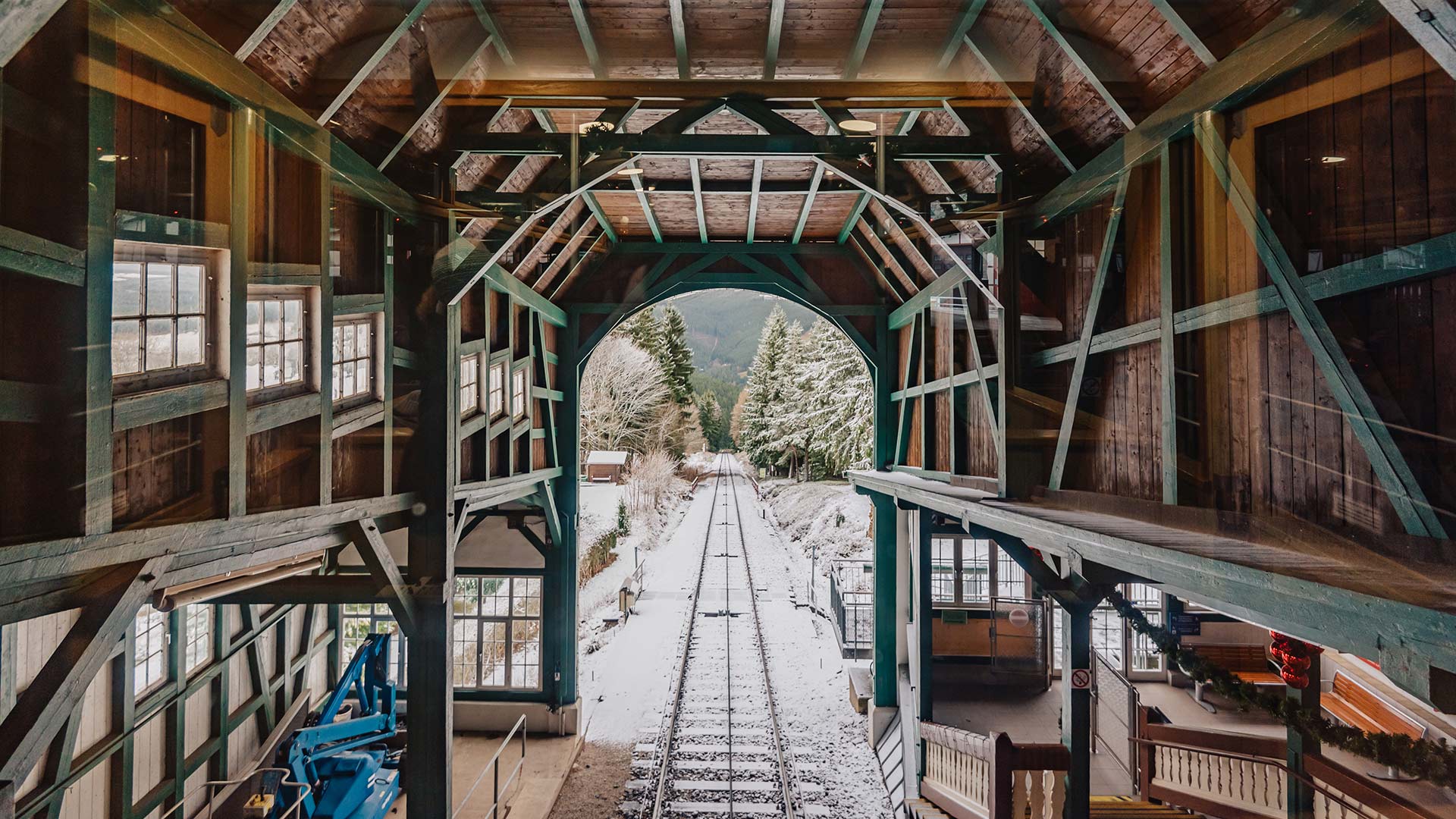
从上魏斯巴赫山地列车的车站向外看,德国图林根 View from railroad station of mountain train in Oberweissbacher, Thuringia, Germany (© golero/iStock/Getty Images Plus)
Cable car station of the Oberweissbacher Bergbahn
Today you can look at snow-covered tracks and remote forests from a station of the Oberweissbacher Bergbahn. If you want to experience the picturesque winter landscape of the Thuringian Slate Mountains from this unique perspective, you don't have to reach deep into your pocket: a day ticket for the historic funicular, which is open every half-hour over a nearly 4 Mile-long route, currently costs just 14 euros.
The track consists of a wide-gauge cable car and an adjoining standard-gauge and electrified adhesion section. Both parts of the route are closely linked operationally and have been listed as a monument to the history of production and traffic since 1982. The mountain railway has been part of Deutsche Bahn AG since 1994 - at the moment it is the only German cable car that is not owned by the community or privately.
楚格峰下的艾布湖,德国巴伐利亚 Eibsee lake at the base of Zugspitze mountain, Bavaria, Germany (© Marc Hohenleitner/Huber/eStock Photo)
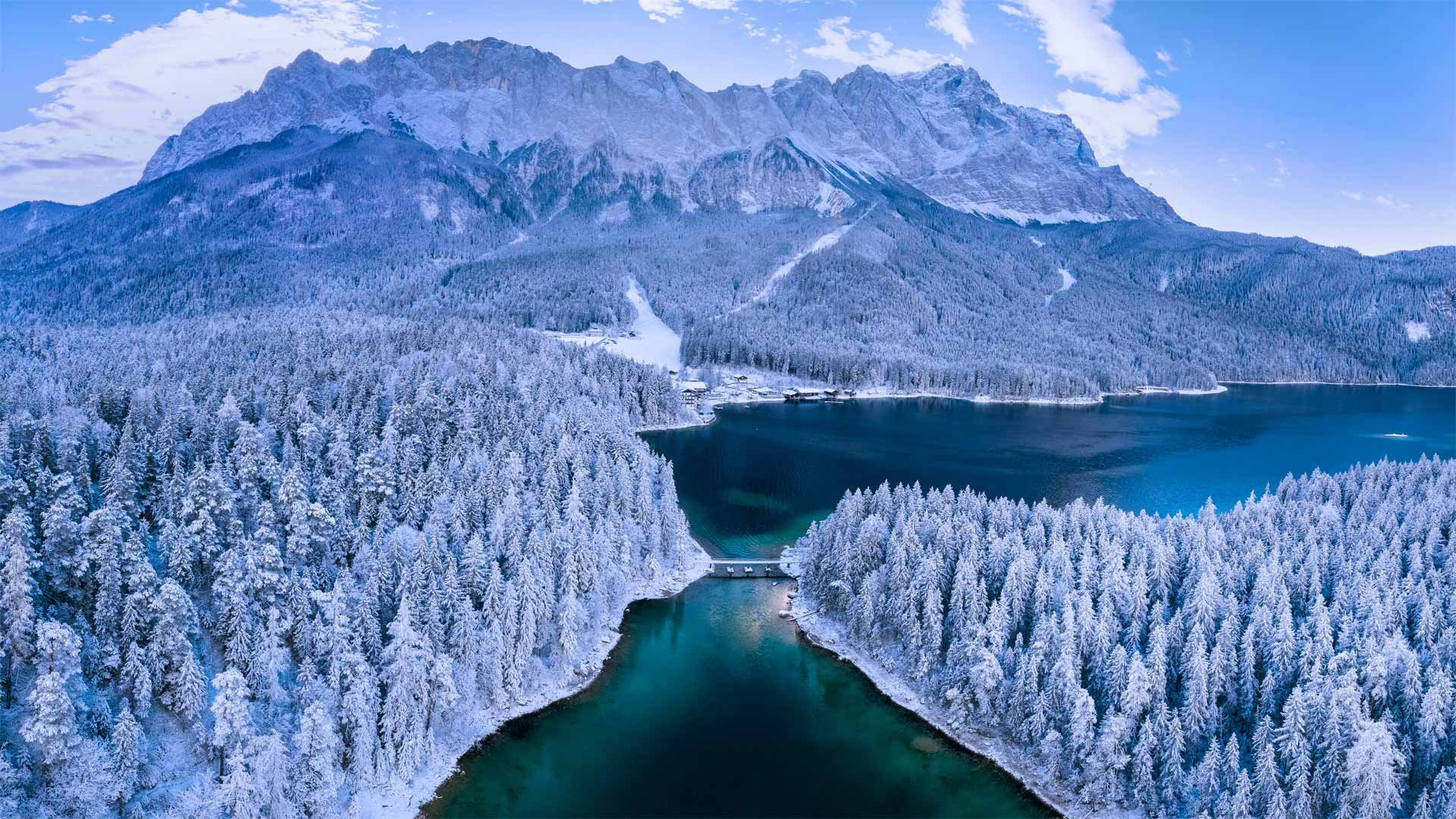
楚格峰下的艾布湖,德国巴伐利亚 Eibsee lake at the base of Zugspitze mountain, Bavaria, Germany (© Marc Hohenleitner/Huber/eStock Photo)
The Zugspitze: Germany's highest point
Welcome to the snowy Bavarian Alps, where the mountain called the Zugspitze (TSOOG-shpit-seh) casts a cold shadow over the Eibsee, a small and serene alpine lake. Situated on the border with Austria, the peak is Germany's highest point at almost 10,000 feet above sea level, towering over the lakeside village of Grainau.
The word 'zug' means 'train' in modern German. Though the peak's name is much older than the locomotive (and probably refers to 'zugbahnen,' deep tracks cut into the mountainside by avalanches), it's especially appropriate now: a steep cogwheel railway tunnels up from the nearby town of Garmisch-Partenkirchen to a plateau near the summit. Aerial trams also serve the mountaintop from both the German and Austrian sides, and the one from Grainau boasts the longest free span for a cable car in the world, at about two miles.
巴克南的跨年烟火,德国 Fireworks for New Year's Eve in Backnang, Germany (© Lilly/Alamy)
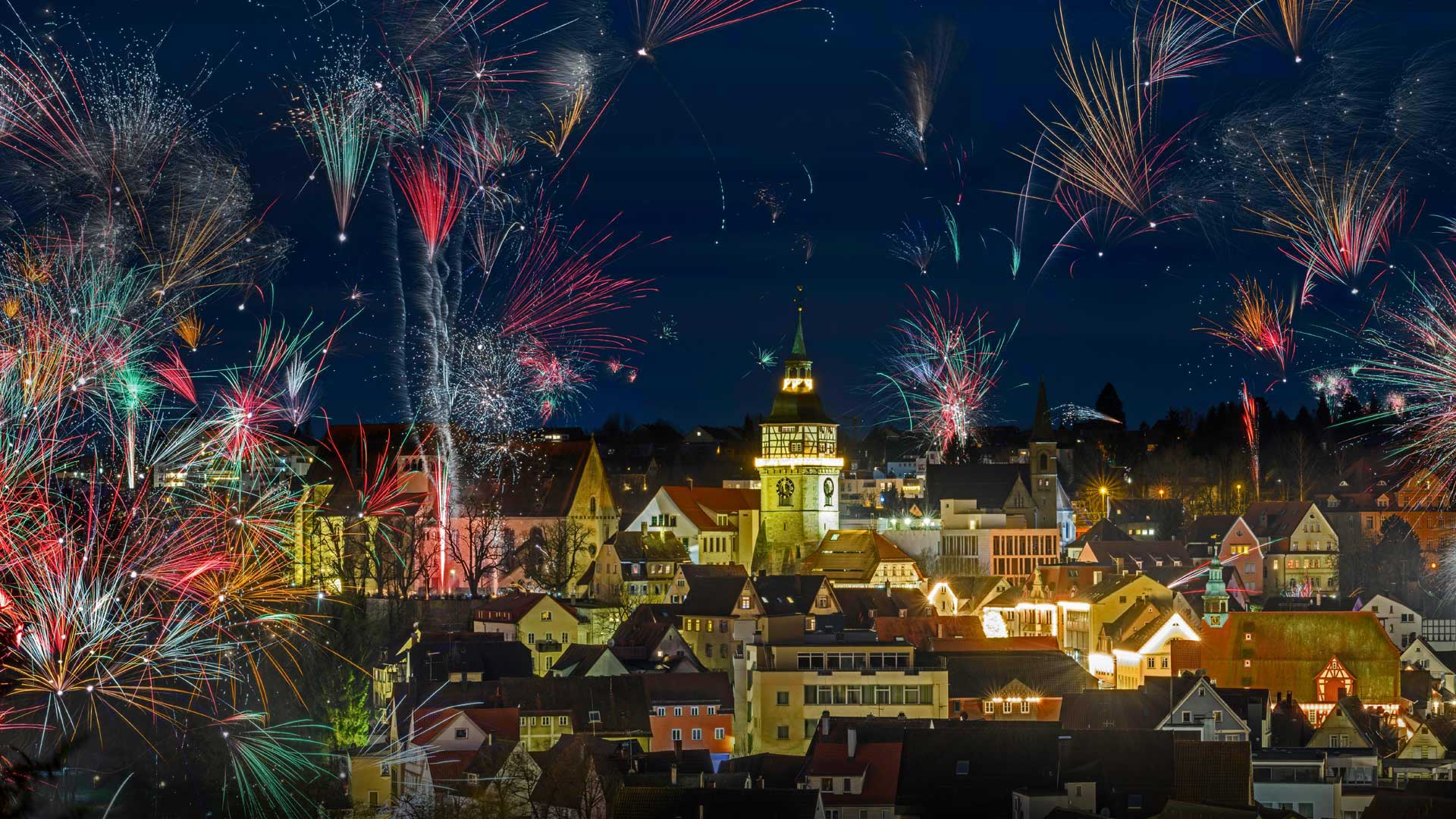
巴克南的跨年烟火,德国 Fireworks for New Year's Eve in Backnang, Germany (© Lilly/Alamy)
3, 2, 1 … Happy New Year!
Backnang, the city celebrating the new year in this photo, is in Germany's Baden region. Thanks to the Rhine River on the west, and the Black Forest to the east, the soil in Baden is ideal for vineyards. Among the varieties of wine produced here, Spätburgunder is common, which you may know by its more common French name: Pinot Noir. It seems likely that the people of Backnang would be celebrating with a glass of Pinot or something else this evening. However you choose to celebrate, here's wishing you a very happy and healthy new year!
贝希特斯加登县拉姆绍小镇上结冰的Hintersee湖和滑冰者,德国巴伐利亚 (© Jana Mänz/Westend61/Offset)
一年一度的施瓦本哈尔圣诞市集,德国巴登-符腾堡州 Annual Schwäbisch Hall Weihnachtsmarkt in the market square, Baden-Württemberg, Germany (© sack/Getty Images Plus)
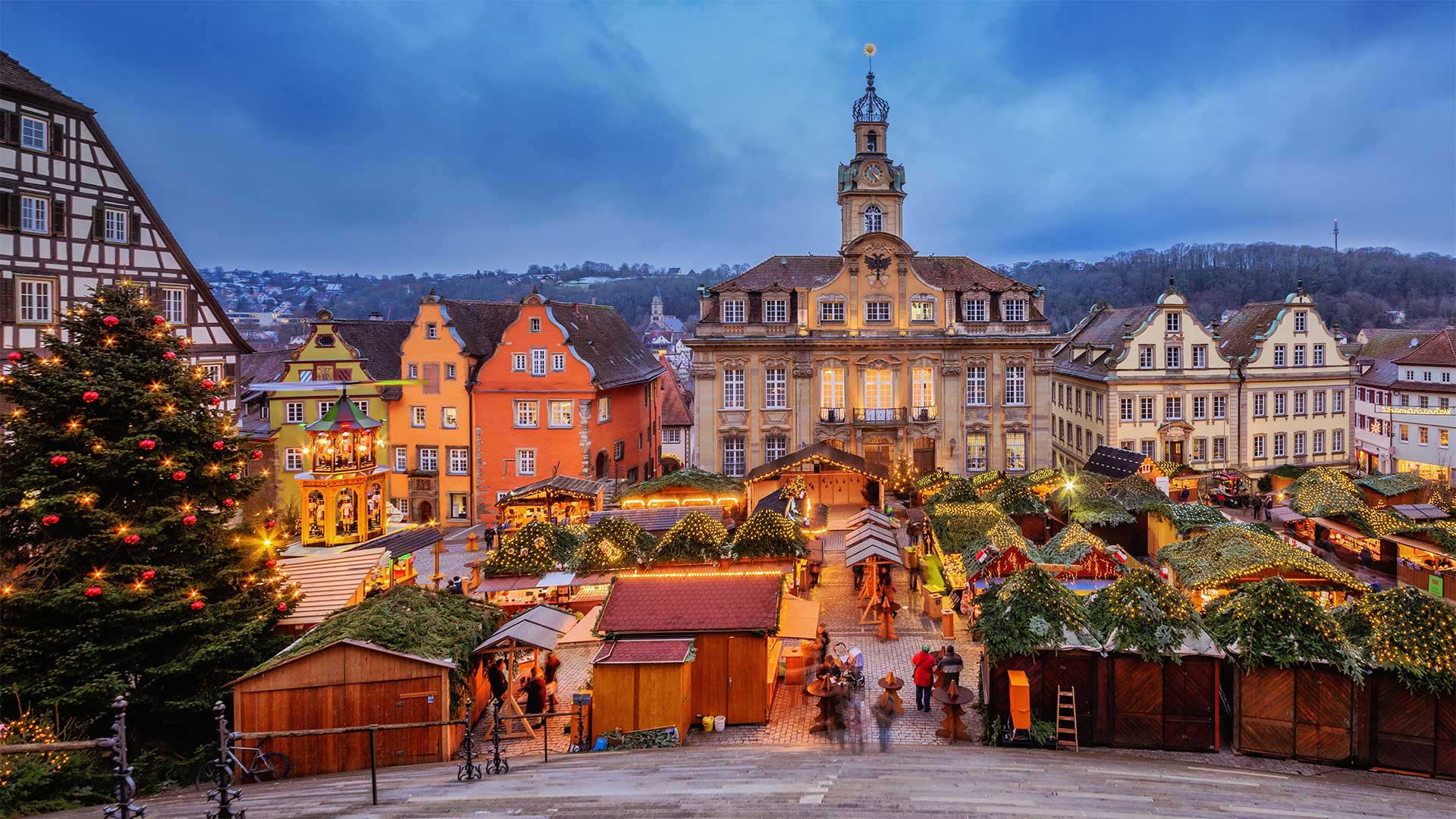
一年一度的施瓦本哈尔圣诞市集,德国巴登-符腾堡州 Annual Schwäbisch Hall Weihnachtsmarkt in the market square, Baden-Württemberg, Germany (© sack/Getty Images Plus)
It's Weihnachtsmarkt time!
The streets of this market square are all decked out in a tradition born nearly 700 years ago. Weihnachtsmarkts or Christkindlmarkts (Christmas markets, if you prefer less of a mouthful), take place around the world, but they originated in Germany as a celebratory way to observe Advent, the Christian season leading up to Christmas Eve. These markets are generally open-air affairs where everything is decorated, including the trees (called Tannenbaums in German if they're firs). People shop from local artisans who sell their handmade wares in small wooden chalets. Then it's off to eat traditional foods—roasted almonds, pastries, and biscuits—and sip on warm mulled wine. Today we're walking through Schwäbisch Hall, a German town that came into prominence during medieval times for its salt production, or 'white gold.' After holiday revelers tire of shopping and dancing in the streets, they can ease into one of the town's many healing spas to end the day.
大雾笼罩下的巴伐利亚阿尔卑斯山脉,德国 Fog shrouds the Bavarian Alps in Germany (© Anton Petrus/Getty Images)

大雾笼罩下的巴伐利亚阿尔卑斯山脉,德国 Fog shrouds the Bavarian Alps in Germany (© Anton Petrus/Getty Images)
Mountain mists over Bavaria
If the forecast in Bavaria calls for 'nebel'—you'll know that means fog. In modern German, the word for 'November' is 'November.' But an older German term for this month was 'Nebel-mond' which translates to English as 'fog month'—it's the time of the year when fog is most likely to roll in. In some parts of the world the topography and local climate make fog a regular feature of the weather, especially during certain times of the year. That's called 'fog season.' San Francisco has a fog season. Tampa, Florida, does too. Is there a fog season where you live?
